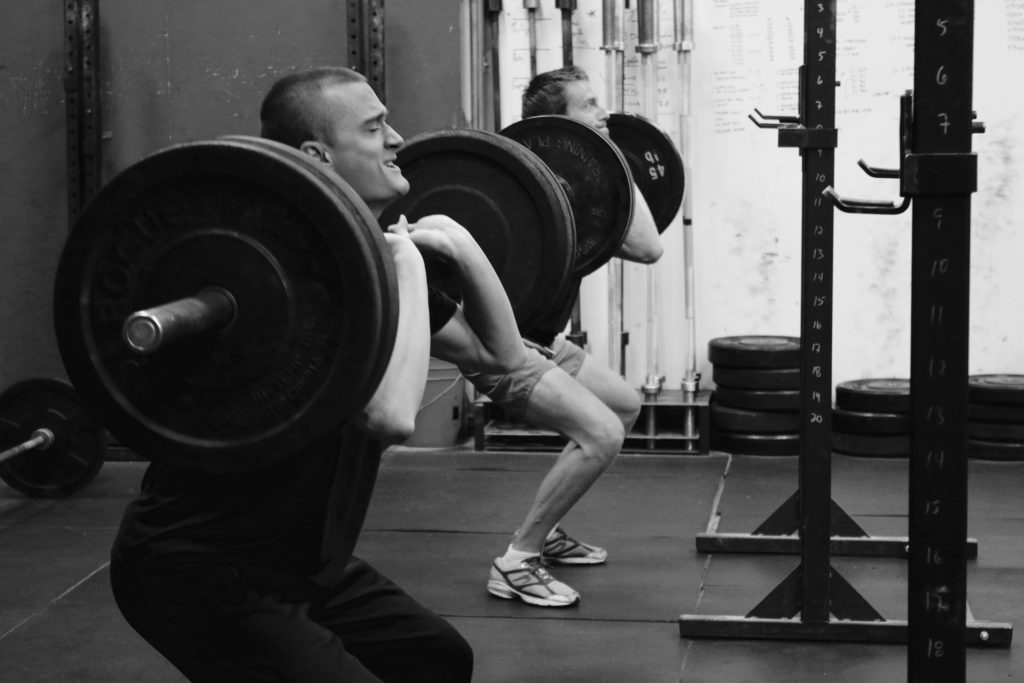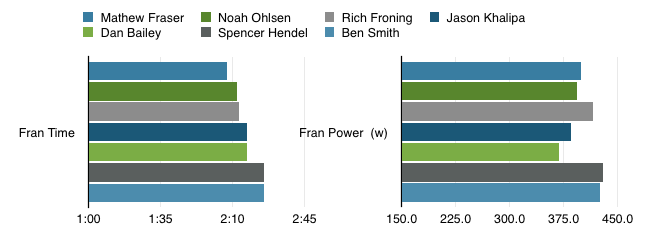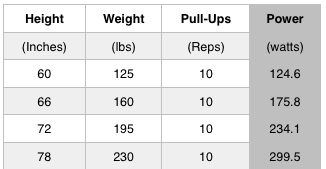
Adam Scott, MS, CSCS
The military abounds with endurance standards (both aerobic and muscular). At MTI, we rely pretty heavily on the relative strength standards we have developed over the past 7 years. Somewhere between these two standards lies the elusive realm of Work Capacity.
Endurance standards rely on distance and time (e.g. 5 miles in 40 minutes). Strength standards use weight (e.g. 400# 1RM Bench Press). And muscular endurance standards, another military favorite, use repetitions (e.g.100 push-ups in 2 minutes).
Work Capacity is part strength, part aerobic endurance, and part muscular endurance. So, how do we assess and standardize something which touches on so many physiological variables?
One possible solution might be to use “Power.” “Power” with a capital “P” – power based on its physical and biomechanical definition: P = w/t
Defining Power
Simply put, “Power” is the rate of doing work – typically measured in Watts (w). If you are interested in equations, here you go…(if not, feel free to skip ahead).
Power (P) = Work (w) / Time (t) , and…
Work (w) = Force (f) x Displacement (d), and…
Force (f) = Acceleration (a) x Mass (m), and…
Acceleration (a) = △Velocity (△v) / Time (t), and…
Velocity (v) = Displacement (d) / Time (t)…
…Thus…
Power (P) = Mass (m) x Displacement2 (d2) / Time3 (t3)
This means power relies on three major things and, accordingly, there are three ways to increase Power.
- Move heavier stuff (increase mass)
- Move stuff further (increase displacement)
- Move stuff faster (decrease time)
Improving any one of these factors (while the other two, at least, stay the same) will have a positive effect on power. Changes in time typically have the greatest impact on power output (time is cubed), followed by displacement (displacement is squared), followed by mass.
Why Power?
Power meters and power calculators forever changed training for cycling and rowing. Because Power accounts for mass (weight), distance/displacement and time, it can be used to normalize physical data and assessments. Power outputs provide a performance standard that is relative to the individual and independent of outside factors which could skew the assessment.
Anyone who has witnessed a max rep pull-up assessment can attest to the fact that 10 pull-ups for someone who is 5’0” and weighs 125 lbs is not the same as 10 pull-ups for someone who is 6’6” and weighs 230 lbs. Power calculations are able to account for and differentiate between the two performances – i.e. taller, heavier athletes pull more weight further during each repetition. Take a look at the table below for some examples (Note: it assumes each rep is about 2 seconds long):
These Power estimations utilize the Catalyst Athletics Power Calculator: http://www.catalystathletics.com/resources/power-output/. It is not a perfect tool (for reasons discussed later). However, it does provide an educated estimate of power output.
Taking this a step further, Power calculations can reveal big differences in multimodal Work Capacity events. Below is a look at the CrossFit workout “Fran.” The chart below shows times and Power outputs for a few of the sport’s top athletes.

As you can see, there is almost no correlation between “Fran” time and Power production. This is due to the relationship between distance (in this case height), weight and time. All athletes completed the same workout (21-15-9 x 95# Barbell Thruster and Pull-Ups) but each athlete was also working with their individual height and weight.
The same is mostly true for female athletes. By far the fastest “Fran” time was from Camille LeBlanc-Bazinet (2:04) but, as you can see in the graph below, Chyna Cho is producing the most power in the group (by almost 20 watts).
The table and charts above show that developing a Power standard could provide a way to assess work rates for athletes which take into consideration their individual characteristics. A power standard would represent a more holistic view of an athlete’s abilities as compared to the current standards for time, distance, weight or reps.
If a Power standard proves viable as a Work Capacity assessment this would also allow us to calculate power to weight ratios, “Functional Threshold Power,” develop power profiles for athletes and prescribe training based on power levels (similar to endurance “zones”).
Problems with Power
Unfortunately, Power does have it’s downsides. Unlike time, distance, weight and repetitions, Power is not easily measured. Even straightforward movements like pull-ups can create complicated power equations. A precise power calculation requires exact measurements of an athlete’s mass, center of mass, limb length, body segment weights and much more.
Luckily, there are ways to estimate these numbers based on an “average” individual’s body composition and design. The table above shows a few of these estimations. Measurements similar to these were used to help build the Catalyst Athletics Power Calculator we mentioned before (and others like it).
The Catalyst calculator is a great tool. However, because every athlete, even those of the same height and weight, will differ greatly in specific body measurements, calculators are limited in their accuracy.
Still, the biggest hindrance to these calculators is that they fail to account for the energy expenditure associated from eccentric movements – which can be more than 30% of the total power output. Basically, the calculator accounts for the power an athlete uses to pull themselves up during a pull-up, but not the power used to lower themselves down.
What’s next
We are going to dig deeper into developing a Work Capacity Standard by comparing Power outputs across multiple disciplines: Cycling, Rowing, and CrossFit. We are also going to look at Power to Weight Ratios in some multimodal events to see if we can get any closer to identifying a possible standard.
References
- Carmelo Bosco PL, and Paavo V. Komi. A Simple Method for Measurement of Mechanical Power in Jumping. European Journal of Applied Physiology and Occupational Physiology 50: 273-282, 1983.
- http://home.trainingpeaks.com/blog/article/power-profiling. Accessed 13 August/2015.
- Karduna AR. Introduction to Biomechanical Analysis, in: Biomechanical Principles. p 20.
- Keytel LR, Goedecke, J.H., Noakes, T.D., Hiiloskorpi, H., Laukkanen, R., van de Merwe, L., Lmabert, E.V. Predictions of energy expenditure from heart rate monitoring during submaximal exercise. Journal of Sports Science, 2005.
- Knudson DV. Correcting the use of the term “power” in the strength and conditioning literature. Journal of Strength and Conditioning Research 23: 1902-1908, 2009.
- Lakomy HKA. Laboratory measurement of human power output during maximum intensity exercise. Physical Education 28, 1993.
- Steiler S. Physiology of an Elite Rower. 1996.
Power Calculator Websites
- http://www.catalystathletics.com/resources/power-output/
- http://www.concept2.com/indoor-rowers/training/calculators/watts-calculator
- http://www.topendsports.com/testing/running-power.htm
You Might Also Like Developing A Work Capacity Standard Part II: Crossfit, Rowing and Cycling


